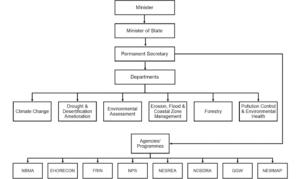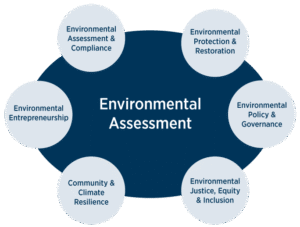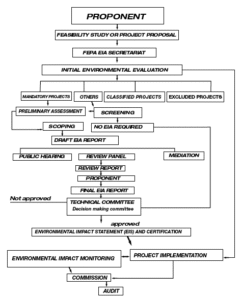Back to: Environmental Biology 500 Level
Welcome to class!
Hello there, my brilliant learner! I hope you’re having a fantastic day. It’s always wonderful to connect with someone who’s eager to learn and grow. Today’s class is a very important one—especially for future environmental leaders like you. We’ve talked about what Environmental Impact Assessment (EIA) is and why it’s important. Now, let’s look at the Legal Framework for EIA in Nigeria—that is, the laws and rules that guide how EIA is carried out in our country. Don’t worry, we’ll keep it simple, relatable, and very Nigerian.
Legal Framework For EIA In Nigeria
What is a Legal Framework?
A legal framework refers to the set of laws, regulations, and policies that govern a particular activity. For EIA in Nigeria, the legal framework ensures that projects—like roads, factories, or oil pipelines—are assessed for environmental impact before they begin. This helps protect the environment and people’s lives.

Think of it like a football match: without rules and referees, players can do whatever they want, and someone might get hurt. The legal framework for EIA makes sure developers follow the rules before kicking off any major project.
Key Laws Guiding EIA in Nigeria
Environmental Impact Assessment Act (Cap E12 LFN 2004)
This is the main law that guides EIA in Nigeria. It was first introduced in 1992 and later included in the Laws of the Federation in 2004.
It makes EIA compulsory for certain types of projects (e.g., oil drilling, highways, large dams).
It requires project developers to submit an EIA report before starting construction.
It gives the public a chance to comment on projects that may affect them.
Federal Ministry of Environment
This is the main government body that oversees EIA in Nigeria. It reviews EIA reports, conducts public hearings, and grants approval (or rejection) based on findings.

National Environmental Standards and Regulations Enforcement Agency (NESREA)
NESREA works to enforce environmental laws in Nigeria, including those related to EIA. If a company fails to do an EIA or breaks the rules, NESREA can take legal action.
Sectoral Guidelines
Nigeria has specific EIA guidelines for different sectors—like oil and gas, agriculture, transportation, and mining. These help tailor the EIA process to the type of project being planned.
Importance of the Legal Framework
Ensures Accountability
Developers can’t just start building without considering the environment. They must follow the law or face penalties.
Protects Communities
Laws ensure that affected people, especially those in rural or vulnerable communities, are not ignored during development.
Supports Sustainable Development

The legal framework ensures that Nigeria grows without destroying the environment for future generations.
A Real Nigerian Example
In the construction of the Abuja-Kaduna railway, an EIA was required by law. The EIA helped the government address concerns about noise, displacement of communities, and effects on local wildlife. Without the legal requirement, these issues might have been ignored.
Summary
- The legal framework for EIA in Nigeria is mainly governed by the Environmental Impact Assessment Act (Cap E12 LFN 2004).
- The Federal Ministry of Environment and NESREA are key enforcement bodies.
- Laws ensure that developers consider the environment before starting major projects.
Evaluation
- What is the main law that governs EIA in Nigeria?
- Name two agencies involved in enforcing EIA laws.
- Why is the legal framework important for communities affected by development?
- Give one example of a project in Nigeria that required an EIA.
Well done, champ! You’ve just unlocked another powerful piece of knowledge that shapes the future of our country. Keep going strong—Afrilearn is with you every step of the way. Next class is going to be even more exciting, so come prepared. You’ve got this!
